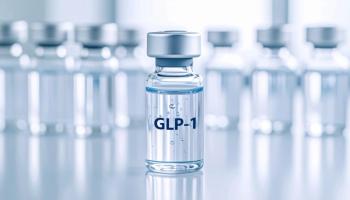
Rituximab Plus Hyaluronidase Combination Approved to Treat Leukemia, Lymphomas
Subcutaneous administration of Rituxan Hycela shortens treatment length to only 5 to 7 minutes.
The FDA today approved
The approval is based on multiple clinical trials, and provides patients with a subcutaneous option for rituximab that shortens the treatment time to 5 to 7 minutes compared with intravenous infusion, which can take several hours, according to the press release.
Findings from the randomized clinical trials demonstrated: non-inferior rituximab trough concentrations (Ctrough) levels for Rituxan Hycela 1400-mg/23,400 units compared with an intravenous rituximab 375-mg/m2; non-inferior rituximab Ctrough levels for Rituxan Hycela 1600-mg/26,800 units compared with intravenous rituximab 500-mg/m2; and comparable safety and efficacy of the 2 products.
The most common adverse events (AEs) in patients with follicular lymphoma were infections, neutropenia, nausea, constipation, cough, and fatigue. Among patients with diffuse large B-cell lymphoma, AEs included infections, neutropenia, alopecia, nausea, and anemia. The most common AEs reported in patients with chronic lymphocytic leukemia were infections, neutropenia, nausea, thrombocytopenia, pyrexia, vomiting, and injection site erythema.
The recommended doses for patients with follicular lymphoma and diffuse large B-cell lymphoma is 1400 mg of rituximab and 23,400 units of hyaluronidase human. For patients with chronic lymphocytic leukemia, recommended dosing is 1600 mg of rituximab and 26,800 units of hyaluronidase human.
Approval of the combination treatment is indicated for the following previously approved indications for Rituxan:
- relapsed or refractory, follicular lymphoma as a single agent
- previously untreated follicular lymphoma in combination with first-line chemotherapy, and in patients achieving a complete or partial response to rituximab in combination with chemotherapy, as single-agent maintenance therapy
- non-progressing (including stable disease) follicular lymphoma as a single agent after first-line cyclophosphamide, vincristine, and prednisone chemotherapy
- previously untreated diffuse large B-cell lymphoma in combination with cyclophosphamide, doxorubicin, vincristine, prednisone, or other anthracycline-based chemotherapy regimens
- previously untreated and previously treated chronic lymphocytic leukemia in combination with fludarabine and cyclophosphamide
Newsletter
Stay informed on drug updates, treatment guidelines, and pharmacy practice trends—subscribe to Pharmacy Times for weekly clinical insights.

















































































































































































































